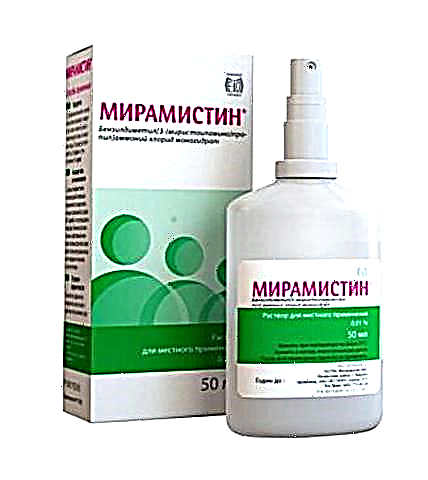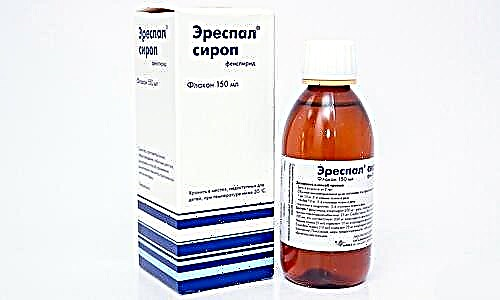
The baby in the womb is in dire need of an uninterrupted supply of oxygen. It is important for the work of all organs, tissues, systems.
The need for oxygen remains no less high both during and after childbirth. A state of acute shortage - hypoxia can lead to asphyxiation of newborns - suffocation. This condition is very dangerous both in itself and in its long-term consequences.

What it is?
The one who proposed to call the state of oxygen starvation in newborns precisely asphyxia was not entirely accurate: until now this term is accepted and recognized by not all neonatologists. "Asphyxia" - suffocation, impulse, this is how the term can be translated from Greek. Therefore, many doctors believe that talking about asphyxia is reasonable and fair only in the case of a stillbirth.
In pediatrics, one more interpretation of the term is also accepted: asphyxia means the absence of gas exchange processes in the lungs of a newborn, while the child can be alive (there is a pulse, there are signs of life). therefore when talking about asphyxia, they usually mean hypoxia - oxygen starvation... But the term "hypoxia" is more applicable to the fetus during its intrauterine development, and "asphyxia" - to the children born. In ICD, each of these two states has its own description.
In any case, a condition is described in which the child's body undergoes certain changes due to an acute or chronic lack of oxygen.
Changes occur at the level of biochemical processes, hemodynamic, clinical. This is a very dangerous condition in which the baby's brain is primarily affected.

Asphyxia of newborns occurs in about 4-6% of newborns, but these data are average. If we talk about premature babies born before the 36th week of pregnancy, then asphyxia is recorded in 9-11% of babies, and in full-term babies the frequency of the spread of pathology does not exceed 0.7%.
To objectively imagine the danger of this pathological condition, you just need to familiarize yourself with the dry facts of medical statistics:
20-50% of children with intrauterine hypoxia die in the womb;
59% of babies with a pronounced uncompensated intrauterine oxygen deficiency are born dead;
in 72.5% of cases, newborn asphyxia becomes the main prerequisite for the death of a baby in the first few days after birth or his disability.
It is difficult to predict the consequences of newborn asphyxia, because it all depends on how irreversible the changes caused by oxygen deficiency in the child's body will be.

Causes of occurrence
Asphyxia of newborns is not a separate disease, but a syndrome that most often develops due to complications of pregnancy, pathologies in the fetus and its mother. Oxygen could be lacking even in the womb, for a more or less long time. In this case, they speak of primary asphyxia.
Its root causes are very numerous and it is extremely difficult or impossible to establish the exact one:
intrauterine infections (mom had been ill in the first trimester or later rubella, cytomegalovirus infection, syphilis, toxoplasmosis, chlamydia, herpes infections);
rhesus conflict (an Rh-negative mother develops an immunological incompatibility with the fetus if the child borrows a positive Rh factor from the father);
congenital anomalies baby development;
complete or partial blockage of the lungs fetal amniotic fluid or mucus.


Risk factors for the development of primary asphyxia are any acute and chronic diseases in the expectant mother, especially when it comes to pathologies of the cardiovascular system, lungs, thyroid gland, diabetes mellitus.
The risk of asphyxia increases with gestosis, the presence of bad habits in a woman, from which she did not want to give up even during the period of bearing her child.
Risk factors include post-term pregnancy (42 weeks or more) due to depletion of the placenta, in which it cannot fully provide the baby with oxygen. Acute hypoxia develops with early detachment of the "child's place", as well as in complicated labor (protracted, rapid, against the background of weakness of labor forces).
Secondary asphyxia in the fetus develops when the blood circulation in the brain is impaired, as well as in any pneumopathy - a condition in which the lung tissue does not fully expand, and the lungs cannot function at full strength after the birth of the baby.
The etiology can be different, but the clinical picture is almost always the same.


What's happening?
Regardless of what causes oxygen starvation, pathological changes in the child's body develop according to a similar scenario. Metabolism and blood circulation are impaired. The longer the oxygen starvation was, the more severe the consequences it can entail.
Lack of oxygen in the child's blood entails a sharp increase in the amount of nitrogenous compounds and a decrease in the amount of glucose. The potassium content rises sharply, and then the potassium content drops sharply. With such instability of electrolytes, cells are overfilled with fluid.
If hypoxia is acute (emerged recently), then the amount of circulating blood increases, and if the lack of oxygen is chronic, then the amount of blood in the body, on the contrary, decreases. The blood becomes thicker, more viscous, and the number of platelets is increased. This affects the brain, kidneys, heart, liver. Edema usually develops in these organs. Violation of hemostasis, an increase in blood viscosity leads to ischemic brain damage, hemorrhages (like a stroke). All tissues of internal organs experience oxygen starvation. The heart decreases the volume of ejection, blood pressure drops.
Further, it all depends on how severe changes and lesions caused by hypoxia in the tissues of the organ.

Classification
Asphyxia is primary and secondary. Primary is a congenital form, when the baby was experiencing oxygen deficiency while still in the womb. The pathogenesis can be different, as in the case of secondary asphyxia that arose already during childbirth or in the very first hours of the child's existence outside the womb. Primary, in turn, can be both acute and chronic. The severity of asphyxia decides a lot - from the nature of resuscitation to forecasts for the future.
The degree is determined by the child's condition when assessed on the Apgar scale:
heart rate: 0 points - absent, 1 point - less than 100 beats per minute, 2 points - more than 100 beats per minute;
breath - 0 points - absent, 1 point - irregular inhalation and exhalation; 2 points - even and rhythmic, loud cry;
muscle tone - 0 points - limb sagging, 1 point - flexion of arms, legs, 2 points - active movements;
reflexes (tickle the soles, irritate the nasal passages with a catheter) - 0 points - there is no reaction, 1 point - the child makes grimaces; 2 points - sneezes, screams;
color of the skin - 0 points - cyanotic or pale skin (white asphyxia), 1 point - normal skin, but cyanotic arms and legs, 2 points - the same pink color of the skin on the body and limbs.


The first time a child is assessed at the first minute of life, then at the fifth. If, in the fifth minute, the newborn gains 7 or less points, it is additionally assessed at 10, 15 and 20 minutes of life. But it is the "five-minute" estimate that is considered the most accurate.
The higher the number of points scored by the kid, the more favorable the predictions. Easy degree - 6-7 points according to Apgar. Moderate asphyxia at 1 minute is 4-7 points according to Apgar, and severe oxygen starvation - from 0 to 3 points in the first minute of life.
Additional laboratory and instrumental studies help to more accurately classify oxygen starvation.

Symptoms and signs
If you carefully look again at the criteria of the Apgar scale, you can understand what a child with asphyxia looks like.
- If the asphyxia is mild, then the baby's first breath occurs in the first minute of life, but breathing is somewhat weakened, the legs and arms may have a bluish tint, the nasolabial triangle turns blue, there is muscle activity, but reduced.
- With moderate asphyxia the baby's first breath also occurs in the first minute, but breathing is usually noticeably weakened, irregular, the cry is weak, more reminiscent of a squeak, the heart rate is slow, the cyanosis of the face, arms and legs is clearly visible even for non-professionals.
- With severe hypoxia inspiration may be later than the first minute, breathing is irregular, apnea may occur, the heartbeat is irregular, rare, the child is pale or completely cyanotic, there is no cry, reflexes are absent. It is more likely that in the first day after birth, post-hypoxic brain damage starts - the outflow of cerebrospinal fluid is disturbed, and cerebral hemorrhage may develop.

Necessary actions and examinations
Clinical recommendations for doctors imply the provision of first aid to a baby with asphyxia, and all the possibilities of resuscitation of the obstetric institution are at his service. It all depends on the severity of the pathological condition. An oxygen mask is enough for some children, while others need to be connected to a ventilator.
Diagnostics is by no means limited to one Apgar score. Lack of oxygen and metabolic disorders are also shown by laboratory tests of the newborn's blood. A child born with oxygen starvation syndrome, or a baby who developed this condition after birth, is monitored by neonatologists and pediatric neurologists around the clock. On the second day, ultrasonography is performed - ultrasound of the brain in order to understand how large-scale the changes in the brain structures and membranes are.


Treatment
If the baby has mild to moderate asphyxia, then first of all, to the crumbs, according to the protocol of the Ministry of Health, which specifies the procedure, they clean the nasopharynx, mouth, stomach from the contents - water and mucus... An oxygen mask improves the ventilation process of the lungs, a 20% solution of glucose and cocarboxylase is injected into the umbilical cord - this is necessary for metabolic and energy processes in the body.
The baby will be fed to the mother when his breathing is completely stabilized, when the condition of the newborn will not cause concern among the medical personnel.
If the asphyxiation is moderate, but the above measures did not help, the child can be intubated with the trachea and provided with mechanical ventilation. The child is injected intravenously with electrolytes, because a violation of their balance, as we remember, leads to a violation of hemodynamics.
In severe hypoxia, the child is on a ventilator, he can undergo a heart massage if the heart rhythms are greatly reduced. Glucose, calcium preparations, adrenaline, prednisone are administered. The baby is fed with a tube; the mother is not brought in.
Often after as the baby's condition improves, it becomes necessary to additionally observe the work of his central nervous system, and therefore the mother and the newborn are not discharged home, but transported to a specialized children's hospital, where the course of treatment continues, the baby receives qualified nursing care, his mother is trained in the peculiarities of caring for the baby.

After the baby is at home, regardless of the severity of his asphyxia, he is registered with a pediatric neurologist at the clinic at his place of residence.
Forecasts
Parents who have encountered such a pathology are interested in predictions - what is the danger of this condition for the development of a child at an older age? Even the best doctor will not answer this question, because predictions depend on the severity and duration of oxygen deprivation, and on the timeliness and correctness of medical care, and from higher powers, the influence of which doctors recognize, although they cannot explain.
Since the brain and the nervous system most often suffer from asphyxia, the consequences are often associated with disruption of the central nervous system. The more severe the violation, the higher the probability of the death of the baby or his life-long disability.
Usually, during the first three years, babies who have suffered moderate or severe asphyxia may experience behavioral deviations - increased activity or lethargy, high nervous excitability.
The immunity of such children is somewhat weakened in comparison with the immunity of healthy peers. There may be a more or less severe developmental delay.

Predictions are relatively favorable only with a mild pathological condition. In other cases, everything is very individual.
Much depends on how well the mother will take care of the baby after leaving home. She will need to follow all the doctor's recommendationsregularly visit a neurologist with your child. Many are shown therapeutic massage, vitamin therapy. With any increase in temperature, it will be necessary to call a doctor - hyperthermia can significantly worsen the condition of a child with impaired functions of the central nervous system.
A decrease in temperature to 35.6 degrees is also a reason to see a doctor, hypothermia is no less dangerous after asphyxiation.

Prevention
Prevention of asphyxia should be given attention even during pregnancy, and from the first days. In pediatrics, obstetrics, there is a listing of the main examinations that the expectant mother should undergo while waiting for the baby. Family planning is considered important - if a woman treats her diseases and infections in advance before conceiving a child, the chances of having a healthy heir are significantly increased.
For the prevention of a dangerous condition it is recommended to get up early for registration at the antenatal clinic... Doctors will assess risk factors and will regularly conduct examinations that will help identify the condition of the umbilical cord, placenta, and fetus (ultrasound, CTG, USDG). In the case of a critical condition of the baby, a decision is often made about an emergency early delivery in the interests of the fetus.
A woman who is preparing to become a mother needs to trust her doctors, but she should not forget about her participation in prevention: bad habits should be abandoned even before the child is conceived, nutrition should be balanced, the daily routine should be reasonable, gentle. The doctor should be visited without passes, on the dates appointed by the obstetrician.

For the causes of fetal asphyxia and its consequences, see the next video.



